Articles of 2010
The Last Great Heavyweight Rivalry, Part III: The Rumble In The Jungle

(Editor's Note: Last month TSS columnist George Kimball was invited to participate, along with two-time heavyweight champion George Foreman and Dr. Robert Rodriguez, in a Boxing Symposium at the University of Kansas. Entitled “The Last Great Heavyweight Rivalry,” Kimball's presentation at the KU event anecdotally compared the 1970s heavyweight nexus of Muhammad Ali, Joe Frazier, George Foreman, and Ken Norton with that of the middleweight rivalry celebrated in his acclaimed book FOUR KINGS: Leonard, Hagler, Hearns, Duran and the Last Great Era of Boxing. That lecture formed the basis for the special TSS series which continues with this installment.)
Although promoter Don King would become the face of the fight that would come to be known as “The Rumble in the Jungle,” his initial involvement had been that of a middle-man. In early 1974 he had separately approached both Muhammad Ali and George Foreman, even though the heavyweight champion had yet to defend his title against Ken Norton in Venezuela.
By assuring both Ali and Foreman that the other had already agreed to its terms, King was able to persuade both Foreman and Ali to sign contracts guaranteeing them $5 million apiece to fight later that year. The fact that he didn’t have ten million dollars was a matter of slight consequence to King, who was able to use the contracts as leverage to round up the necessary capital. Hank Schwartz’ Video Techniques, in which King already had an interest, was one investor, and a British financier named John Daly, who owned Leisure Technologies, became a major one.
The final piece to the puzzle came when Mobuto Sese Seko, the dictator who had reorganized the former Belgian Congo and renamed it Zaire, agreed to cover the rest of the financing in the hope of boosting the image of his country (to say nothing of his own image) among the nations of the world. The bout would be held that September at the Stade de 20 Mai in the capital city of Kinshasa, formerly known as Leopoldville.
Before he had even left the United States, Ali warned Foreman that “my African brothers are going to cook you in a pot and eat you,” and once he reached Kinshasa he continued a relentless campaign calculated to isolate the champion and turn a fight he described as “the Rumble in the Jungle” into a home game for himself. Foreman, newly divorced, had brought along his dog to keep him company, blissfully unaware that the Alsatian — what we in this country would describe as a German Police Dog — was the breed the Belgian police had used in crowd-control operations during the colonial era. At every opportunity, Ali referred to Foreman’s pet as a “Belgian Shepherd.”
Ali and his entourage were quartered in the luxurious presidential villas at N’sele. Foreman, though the champion, was assigned housing at a military complex, surrounded by barbed wire and manned guard towers, and had every appearance of being a prison. Not that Foreman seemed anxious to leave and mingle with the natives, but he did find the atmosphere so stifling that he eventually moved into a Kinshasa hotel. (There, having spurned the military guard provided by the government, he was obliged to reach into his own pocket to pay for round-the-clock security.)
Ali, on the other hand, made it a point to court the favor of the locals. He made frequent forays into the cities and towns, and even to small villages. Even in places that had never known electricity he was instantly recognized and embraced by the natives. The chant “Ali Bomaye!” — a phrase in the Ngala tongue meaning, literally, “Ali, kill him!” — became his clarion call. The sum effect was to create the widespread impression that the Congolese people considered Ali one of their own, and Foreman a hostile invader.
That Ali seemed to spend much of his daily training laying against the ropes while his sparring partners flailed away was considered unremarkable; he often conserved his energy the same way back at Deer Lake. Foreman, on the other hand, seemed to regard his training sessions as an opportunity to vent his rage, which he took out on his sparring partners. Eight days before the bout, he was sparring with Bill McMurry, who, trapped against the ropes, saw Foreman coming at him and threw up his arms to protect himself . One of his elbows caught the champion above his eye, just below the headgear, and blood immediately spurted forth from the cut.
Word of the injury to the champion spread like wildfire. It was shortly confirmed that the fight would be postponed for a month. Trainer Dick Sadler had immediately patched the wound with a butterfly, but Foreman voiced hope of flying to Europe to have the injury treated by a specialist in France or Belgium. Mobutu, fearing that if Foreman were allowed to leave Zaire he might never return (“and he was right about that,” Foreman says today), refused permission for either fighter to leave the country during the delay.
Foreman viewed this restraint as one more indication that the field had been tilted in Ali’s favor, but the truth of the matter is that Ali was almost as anxious to get away from monkey meat as Foreman was. Once it became clear that he wasn’t going anywhere, Ali continued to train, and the extra month gave him time to achieve a level of fitness he hadn’t approached since before his exile.
Foreman told himself he was doing it to guard against re-opening the cut, but between the date of the injury and the night of the fight, he didn’t spar a single round.
Most of the traveling media contingent had already arrived on-site when the injury occurred. Foreman and Ali were under orders to remain in Zaire; the press corps became a hostage to simple economics. The sweetheart arrangement under which most of them had flown to Africa on Air Zaire did not cover the postponement, and most newspapers discovered it was a lot cheaper simply keep their representative in Kinshasa for a month than to fly him home and back again.
Bob Waters, Newsday’s boxing writer, wound up authoring what proved to be an award-winning series on famine in Africa during this interlude. Budd Schulberg, who filed dispatches from Zaire for the same newspaper, flew back to the United States at his own expense. The night before his departure from Kinshasa, Ali invited Schulberg to dine with him at N’Sele. Although he didn’t consider it particularly noteworthy at the time, Schulberg later recalled that after dinner he and Ali watched some videotape of Foreman’s fights, including those against Gregorio Peralta. Ali sat fixated upon the screen, where the Argentinian seemed to have contracted into a little ball, his back to the ropes, while Foreman flailed away with both fists.
Foreman, Ali pointed out to Schulberg that night, “thinks he’s killin’ him — but all he’s doin’ is getting arm-weary.”
As the anecdote related by Schulberg makes clear, Ali was obviously aware of the possibility that should all else fail Foreman might be lured into expending his energy in a similar manner, but the notion that either he or trainer Angelo Dundee had plotted the strategy that became known as the “Rope-a-Dope” beforehand is misplaced. This myth has survived in part because Norman Mailer, one of many literary luminaries in Africa to cover the Ali-Foreman bout, included in his narrative a purported eyewitness account in which he claimed to have witnessed Dundee marching from corner to corner and using a wrench to deliberately loosen the ring ropes just before the fight, and with Ali already in the ring. In point of fact, Mailer could not have seen this, because it never happened.
Mailer’s account in The FIght also included an evocative scene in the challenger’s dressing room just before the fight, in which he inserted his own name, along with that of fellow author George Plimpton’s, into a list of those present: “Dundee, Pacheco, Plimpton, Mailer, Walter Youngblood, Pat Patterson…” But it seems extremely doubtful that Mailer could have been there at all, particularly at the critical juncture he described in his book.
“Mailer was in the dressing room? He was never in the dressing room,” said Dr. Ferdie Pacheco. “I was the one who kept him out.”
In Bobby Goodman’s recollection, “I was assigned to stay with Ali, while my Dad (publicist Murray Goodman) was going to bring out Foreman. I recall seeing Norman stick his head in for a second, but he didn’t remain with us.”
The bout was scheduled for 4 am, Zaire time, on October 31, which would coincide with a 10 pm closed-circuit showing back in the state. The previous afternoon, in daylight, Dundee and Goodman drove out to the stadium to inspect the venue. Both men had repeatedly implored the locals who would be setting up the ring to wait until the last possible moment, but when they got there the ring was already in place and the ropes were already sagging nearly to the floor after exposure to the heat and humidity. Worse, the turnbuckles had been fully tightened, and couldn’t be readjusted. The two men spent the better part of the afternoon cutting the ropes with razor blades, re-clamping them, and then hand-tightening the turnbuckles to allow for further adjustment in the wee hours of the following morning.
All of this, it should be noted, was done to tighten, not loosen, the ring ropes.
Ali and Foreman entered the ring at the conclusion of the undercard, and, recalls Goodman, “after the prelims, the ropes had stretched out. All along the strategy had been for Ali to dance. He was supposed to stay off the ropes, but once he got in the ring he realized that the Ensaflor padding had become soft and spongy in the heat and that he wouldn’t be able to dance — but when he went to test the ropes they went back so far that he could lean with his head more than a foot outside the ring.
“Just before the fight Angelo and Youngblood and Bundini and I were going to tighten the ropes with a screwdriver or a wrench or just our hands, but Ali told us to leave them alone,” said Goodman.
When the two men removed their robes in their respective corners just before they were summoned to the center of the ring, a wide-eyed Ali poked Dundee and pointed to Foreman’s biceps as he mouthed the word “Big!” He was doing his best to sound overawed, and he made sure Foreman took notice.
Once the bell rang, Foreman approached his task with the same disdain he had had for Frazier and Norton, and there is every indication thad he expected to finish off Ali as easily as he had those two. In a startling display of impudence, Ali ducked inside a Foreman charge and landed a right-hand lead. Though not hurt, Foreman had been served notice that he was in a fight against an opponent who would not go quietly.
In the second round Ali unveiled his backup strategy when he retreated to the ropes and, seemingly offering but token resistance, allowed Foreman to flail away. Taking advantage of the loose ropes, he was able to keep his head out of the optimal range of Foreman’s most dangerous blows, and while some of Foreman’s punches missed and others were blocked, the champion was able to subject Ali’s body and arms to some of his heaviest artillery.
From the corner Dundee was shouting “Get off the ropes!”, and when Ali returned to his stool at the end of the round the trainer admonished him, “What are you doing?”
But even as he plunged ahead with what seemed a suicidal strategy, Ali was able to periodically emerge from his cocoon against the ropes to land sneaky punches of his own. Even though he spent most of each round pounding away without meeting much resistance, this happened often enough that the champion’s face grew increasingly puffy as the night wore on.
On several occasions Foreman was able to land punches that seemed as solid as the ones that had put Frazier and Norton on the floor. Ali not only took them but sneered back with “Is that all you got, George?” and “They told me you could punch.”
Even as it unfolded, nobody described the tactic as the Rope-a-Dope that night. In fact, when he saw Ali do it for the first time, Plimpton turned to Mailer and said “Christ, it’s a fix!”
The descriptive phrase would shortly become so identified with the fight that spawned it that even Foreman employs it today in recalling the events of that evening.
“Yeah,” he says. “And I was the dope.”
Another myth that has grown up around this fight over the intervening 36 years is that Foreman was on his way to a rout until he tired. In fact, on the scorecards of the three offcials after seven completed rounds, Foreman had taken two rounds on referee Zack Clayton’s tally. One of the judges, James Taylor, had Foreman winning one round, the other, Nourridine Adalla, none. (Clayton, Taylor and Adalla had between them scored seven rounds even.)
Ali’s inspired tactic was soundly-rooted for yet another reason: Foreman was so accustomed to putting opponents away early that he rarely had a Plan B. Only the two Peralta fights had lasted as long as ten rounds. Since the second of those, three and a half years earlier, the champion had fought a dozen times, and only one of those — a fifth-round TKO of the Brazilian Luis Faustino Pires– had gotten past the second round.
In the champion’s corner Dick Sadler was telling him to keep pressing the attack on Ali. Archie Moore was also in the corner, and could sense that a failure to adjust might further sap Foreman’s waning stamina, but since he was not the chief second felt it imprudent to countermand the instructions.
By the fifth it was apparent that Foreman’s punches were losing their steam. He continued to pound away, but Ali seemed unaffected, and before the seventh ended the fight had taken yet a new turn. Ali had become the aggressor.
Even so, Foreman continued to regard the man across the ring with disdain, and vowed to knock him out the next round. When Foreman missed with a sweeping punch, Ali countered with a jarring left hook that snapped Foreman’s head into position to receive the right hand that came whistling after it. Foreman went lurching across the ring, seeming to spin in a futile effort to keep himself erect, and eventually crashed down.
Foreman initially seemed alert as he took Clayton’s count, even looking toward his corner for instructions on when to get up. The signal was a bit late in coming, considering how much trouble the weary champion had making it to his feet, but he still seemed to have beaten the count and was surprised to see Clayton waving his arms to signal the most improbable upset in boxing history.
What closed-circuit viewers around the world heard was the breathless announcement of David Frost, who was shouting “Ali wins by a knockdown! Ali wins by a knockdown!’
Eight and a half years after his title had been taken away from him, Muhammad Ali had become just the second heavyweight champion in history to regain it.
It was the rainy season in Central Africa, and the predicted rainstorm had held off just long enough for the miracle to take place. (The anticipated downpour would not have postponed the bout, since the ring was covered, but it might have seriously tested the resolve of the nearly 60,000 who packed the Stade to watch it.)
Dawn was already breaking when Ali finally emerged from his dressing room and commenced the drive back to N’Sele. Every step of the way the road were lined with happy Congolese. Ngala is but one of six or seven Congolese languages, and no more prevalent than the others, but on this morning regardless of tribal affiliation every man, woman, and child seemed to be chanting “Ali Bomaye!”
* * *
Sleight of Hand
Can't tell you how many times I'd be walking through a crowded corridor at Caesars ice clinking in glasses rattling dice and the bells of slot machines or maybe just standing in the buffet line at the Elvis Hilton when I'd hear a bug buzz past my ear just before it landed in my hair He got me every time I'd instinctively stop to slap it away smack myself in the head then turn around and there he'd be laughing his ass off By an 8-0 vote the Supreme Court
agreed he was a Minister of Islam but how many Holy Men you know walk around with a deck of cards in their pockets? Back then when his hands still listened he could make the Jack of Diamonds jump out of the pack
and spit in your eye He specialized in making silver dollars disappear but those who know could tell you that his greatest magic trick of all came in Zaire No not the Rope-a-Dope: Before the fight when he turned George Foreman
into a white man
* * *
Articles of 2010
Judah To Fight Mbuza March 5 In NJ


Totowa, NJ – Kathy Duva, Main Events CEO, announced their promotional firm won the purse bid held at IBF headquarters in East Orange, NJ, Thursday. The bid was for the right to hold the IBF's junior welterweight title fight between Zab Judah of Brooklyn, NY and Las Vegas, and South Africa's Kaizer Mabuza.
IBF Championships Chairman, Lindsay Tucker explained, “It is a 50-50 split of the earnings between the two fighters. Kaizer is ranked No. 1 by the IBF, and Judah is No. 2. Where the fight will be held is up to the winning bidder.”
Judah (39-6, 26 KOs) is promoted by Main Events and his own firm Super Judah Promotions, and Branco Milenkovic, of South Africa, promotes Mabuza (23-6-3, 14 KOs).
Kathy Duva confirmed the fight will take place at Prudential Center in Newark, NJ, late February or early March this year as part of Main Events' Brick City Boxing Series. (Saturday Update: the fight is March 5th, in NJ at the Pru Center. The bout will be part of a PPV card.)
“We are very happy that Zab has the opportunity to fight for the IBF Junior Welterweight title right here in New Jersey. Winning this fight will put Zab right in the mix with the winner of Bradley-Alexander and Amir Khan.” Duva elaborated, ” Zab will work very hard to win this fight so that he will be one step closer to his ultimate goal of unifying all of the Junior Welterweight titles by the end of 2011!”
Articles of 2010
UFC 125 Preview: Frankie Edgar Vs. Gray Maynard


Few predicted Frankie Edgar would grab the UFC lightweight championship last year but he did. Most felt he would eventually win it but Edgar not only took the title, he beat one of the best mixed martial artists in history to do it.
Edgar (13-1) has emerged from the milieu of nondescript MMA fighters to become one of the more brilliant performers for Ultimate Fighting Championship. Next comes a rematch with Gray “The Bully” Maynard (11-0) tomorrow at the MGM Grand Casino in Las Vegas. UFC 125 will be televised on pay-per-view.
All it took was not one, but two victories over BJ Penn.
If you’re not familiar with Penn, he’s one of the most versatile fighters in MMA history and had been nearly unbeatable in the 155-pound lightweight division. That is until he clashed with Edgar. Until he met New Jersey’s Edgar, the Hawaiian fighter chopped down lightweight opponents with ease. It was only the heavier welterweights he had problems against. Namely: Canada’s Georges St. Pierre.
Edgar showed poise, speed and grit in defeating Penn in back-to-back fights. The world took notice.
“You know, if I keep winning fights, the respect will come eventually,” said Edgar during a conference call.
Now Edgar will find out if he can avenge the only loss on his record.
“I just think I grew as a fighter. You know, mentally, you know, physically I, you know, possess differently skills, increased – you know, I think I boxed and got better, my Jiu-Jitsu got better and, you know, just have much more experience now,” Edgar says.
Maynard seeks to find out if Edgar has added any more fighting tools to his repertoire. Back in April 2008, the artillery shelled out was not enough to beat the Las Vegas fighter.
“It’s a perfect time. He had the chance and, you know, he took it and the time is now for me and I’m prepared,” said Maynard (11-0). “Any time you’re going up against the top in the world, you evolve and change and so I’m prepared for a new fight, so it will be good. I’m pumped for it.”
Though Maynard’s record indicates he is unbeaten that’s not entirely true. He did suffer a defeat to Nate Diaz during The Ultimate Fighter series and subsequently avenged that loss last January.
The UFC lightweight title is in Maynard’s bull’s eye.
“Looking to take the belt for sure,” said Maynard. “We’ll see on January 1.”
Edgar versus Maynard should be a good one.
Other bouts:
Nate Diaz (13-5) faces Dong Hyun Kim (13-0-1) in another welterweight tussle. Diaz is the only fighter with a win over Maynard. Anyone watching TUF remembers Maynard tapping out from a Diaz guillotine choke. The Modesto fighter has a tough fight against South Korea’s Kim.
Chris Leben (21-6) fights Brian Stann (9-3) in a middleweight fight. Leben is a veteran of MMA and if an opponent is not ready for a rough and tumble fight, well, that fighter is not going to win. Stann dropped down from light heavyweight and we’ll see if the cut in weight benefits the Marine.
Brandon Vera (11-5) meets Thiago Silva (14-2) in a light heavyweight match up. Vera is trying to rally back to the promising fighter he was tabbed several years back. Silva is a very tough customer and eager to crash the elite. A victory by either fighter could mean a ticket to the big time.
Clay Guida (27-8) versus Takanori Gomi (32-6) in a lightweight bout. Guida has become one of the most feared fighters without a title. No one has an easy time with the long-haired fighter. Gomi lost to Kenny Florian but knocked out Tyson Griffin. Can he survive Guida?
Marcus “The Irish Hand Grenade” Davis (22-8) clashes with Jeremy Stephens (18-6) in another lightweight fight. Davis is a go-for-broke kind of fighter and is looking to get back in the win column after a tumultuous battle with Nate Diaz last August. Stephens needs a win too. In his last bout he lost to Melvin Guillard.
Articles of 2010
Borges Looks Back, And Forward With Hope


As the end of another year approaches, there’s no need to invoke Charles Dickens to describe what went on in boxing. It was neither the best of times nor the worst of times. It was just too much time spent on The Fight That Never Took Place.
For the second straight year the sport could not deliver The Fight, the only one fans universally wanted and even casual fans craved – the mix between Floyd Mayweather, Jr. vs. Manny Pacquiao. No one has to be singled out for blame for that failure because this time there’s plenty to go around on both sides. The larger issue is what does it say about a sport when it cannot deliver its top event?
What would the NFL be without the Super Bowl? Where would major league baseball be without the World Series? Golf without the Masters? College basketball without March Madness?
They would all be less than they could be and so it was with boxing this year. Having said that, the sport was not without its signature moments. It was not bereft of nights that left those of us with an abiding (and often unrequited) love for prize fighting with good reason to hope for the future.
Three times promoter Bob Arum took the sport into massive stadium venues just like the good (very) old days and each time boxing drew a far larger crowd than its many critics expected. Twice those fights involved the sport’s leading ambassador, Pacquiao, who brought in crowds of 40,000 to 50,000 fans into Cowboys Stadium against inferior opponents Joshua Clottey and Antonio Margarito. Imagine what he might have done had Mayweather been in the opposite corner?
While both fights were, as expected, lopsided affairs, they showcased the one boxer who has transcended his sport’s confining walls to become a cultural icon and world celebrity. Pacquiao alone put boxing (or at least one boxer) on the cover of TIME and into the pages of such varied publications as Esquire, GQ, The Wall Street Journal, the American Airlines in-flight magazine and even Atlantic Monthly.
As history has proven time and again, that is what happens when boxing has a compelling personality to sell it and Pacquiao is that. Mayweather is such a person as well, but for different reasons.
The one night he appeared in a boxing ring, he set the year’s pay-per-view standard against Shane Mosley while also leaving a first hint of dark mystery when he was staggered by two stinging right hands in the second round.
Mayweather was momentarily in trouble for the first time in his career but the moment passed quickly and Mosley never had another. By the end he had been made to look old and futile, a faded athlete who’d had his chance and was unable to do anything with it. So it goes in this harsh sport when the sands are running out of the hour glass.
As always there were some surprising upsets, most notably Jason Litzau’s domination of an uninterested and out of shape Celestino Caballero and Sergio Martinez’s one-punch demolishment of Paul Williams. The latter was not so much an upset as it was a stunning reminder that when someone makes a mistake against a highly skilled opponent in this sport they don’t end up embarrassed. They end up unconscious.
SHOWTIME did all it could to further the future of the sport, offering up a continuation of its interminably long but still bold Super Six super middleweight tournament as well as the launching of a short form bantamweight tournament which already gave fans to two stirring and surprising finishes with Joseph Agbeko decisioning Jhonny Perez and Abner Mares upsetting Victor Darchinyan in a battle of contusions.
While the Super Six has had its problems – including several of the original six pulling out – it also lifted the profile of former Olympic gold medalist Andre Ward from nearly unknown to the cusp of universal recognized as the best super middleweight in the world this side of Lucian Bute. If Ward continues winning he’ll get to Bute soon enough because that’s why SHOWTIME signed a TV deal with the Canadian and America may get its next boxing star if Ward proves to be what I think he is – which is still underrated and underappreciated.
HBO and HBO pay-per-view put on 23 shows, few of them compelling and many of them paying big money to the wrong people while doing little or nothing to grow the sport that has helped make their network rich. But they did have the knockout of the year – Martinez’s second round destruction of Williams – and some fights in the lower weight classes that were left you wanting more.
Two new names popped up who are causing the kind of fan reaction that also gives us hope for 2011 – American Brandon Rios and Mexican Saul Alvarez. They are two of the sport’s brightest young prospects because each comes to the arena the old-fashioned way – carrying nothing but bad intentions.
Aggression and knockouts still sell boxing faster than anything else and each exhibited plenty of both this year and left fans wanting to see more. Alvarez is already a star in Mexico without having yet won a world title and Rios is the definition of “promise.’’ Whether the star will continue to shine and promise will be fulfilled may be answered next year and so we wait anxiously to find out.
Backed by Golden Boy Promotions, there is no reason 2011 shouldn’t be Alvarez’s year and if it is people will notice and remember him because he has a crowd-pleasing style that is all about what sells most.
That is what boxing needs more of – fresh faces and new stars… so as fans we should root for guys like Alvarez, Ward, Rios and young Brit Amir Khan, who is a star in England but still a question mark with a questionable chin but a fighter’s heart here in the U.S.
Those guys and others not yet as well known are the future of boxing, a sport that for too long has been recycling the likes of Mosley (as it will again in May for one last beating against Pacquiao in a fight that's a joke), Bernard Hopkins (who can still fight although it is unclear why he bothers or where it’s all headed), Roy Jones and, sadly, even 48-year-old Evander Holyfield, who continues to delude himself but not many other people into believing he will soon unify the heavyweight title again.
If fighters like Ward, Alvarez, Rios, Khan, WBC welterweight champion Andre Berto and middleweight king Sergio Martinez continue their rise they could be the antidote for the art of the retread that Arum and Golden Boy have been forcing fans to buy the past few years at the expense of what boxing needs most – fresh faces.
The heavyweight division, which many believe determines the relevancy of boxing to the larger world, remains a vast desert of disinterest here in the US. The Klitschko brothers, Vitali and Wladimir, hold 75 per cent of the title belts but few peoples’ imaginations in the US, although to be fair they are European superstars and don’t really need U.S. cable TV money to thrive economically.
Each defended their titles twice this year, Vitali against lame competition (Albert Sosnowski and Shannon Briggs) and Wladimir against better fighters (Sam Peter and Eddie Chambers) but not competitive ones. Sadly, there is no American on the horizon to challenge them, a comment on the division and on our country, where the athletes who used to be Joe Louis or Muhammad Ali now opt for the easier and frankly safer road of the NFL or the NBA. Who can blame them considering all the nonsense a fighter has to go through to just make a living these days?
The one heavyweight match that would be compelling and might lift the sport up for at least a night would be either of the Klitschkos facing lippy WBA champion David Haye. The fast-talking Brit claims to not be ducking them but he’s had more maladies befall him after shouting from the rooftops how much he wants to challenge them that you have to wonder if Haye is simply a case of big hat no cattle syndrome.
For the sake of the sport, we should all be lighting candles each night in hopes our prayers will be answered and Haye will finally agree to meet one of them. It may not prove to be much of a fight but at least it will give us something to talk about for a few months.
Whatever Haye and the Klitschkos decide the fighter with the most upside at the moment however seems to be Sergio Martinez. He has matinee idol looks, a big enough punch to put Paul Williams to sleep with one shot and a work ethic second to none. The Argentine fighter had a year for himself, starting with a drubbing of Kelly Pavlik followed by his demolishment of Williams. Those kinds of victories, coupled with his Oscar De La Hoya-like looks, are the type of things that if HBO or SHOWTIME would get behind him could allow Martinez to capture the attention of both fight fans and more casual ones.
In general, Hispanics fighters continued to dominate much of the sport’s front pages with Juan Manuel Marquez’s two victories in lightweight title fights leading that storyline. His war with Michael Katsidis is a strong candidate for Fight of the Year and his technical skill and calm demeanor make him the uncrowned challenger to Pacquiao. The two have unfinished business that should be settled this year if Arum stops standing in the way.
Two other fighters who gave us moments to remember in 2010 were Juan Manuel Lopez, who knocked out three solid opponents including highly respected Mexican warrior Rafael Marquez, and Giovani Segura, who won four times (that’s three years work for Mayweather) in 2010, all by knockout. Along the way, Segura defeated one of the great minimum weight fighters in history, slick Ivan Calderon, to win the belt on Aug. 28.
Lastly, boxing gave us another magical cinematic moment as well with the release of “The Fighter,’’ a film based on the life and hard times of junior welterweight scrapper Micky Ward. The film has won rave reviews and many awards and seems likely to have several of its actors nominated for Academy Awards, most notable Christian Bale for his sadly humorous portrayal of Ward’s troubled half brother, former fighter Dickie Ecklund.
Boxing has a long history of providing the framework for memorable movies and it did it again with “The Fighter,’’ a film that did more for boxing than any promoter did all year.
All in all, it wasn’t the best of years for boxing but it was a good year that picked up speed in the final months and, like that great golf shot you finally hit out of the rough on the 18th, left us with reasons to hope for a better year in 2011. If somehow it gives us Mayweather-Pacquiao, the emergence of Alvarez and Rios, the ascension of Martinez and Haye vs. the best available Klitschko in addition to the kind of solid performances that always come along, it could be a year to remember.
-
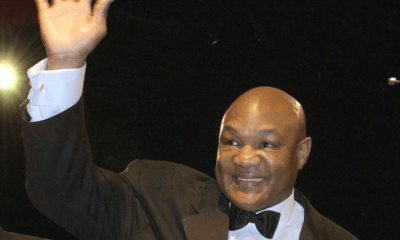
 Featured Articles4 weeks ago
Featured Articles4 weeks agoA Paean to George Foreman (1949-2025), Architect of an Amazing Second Act
-
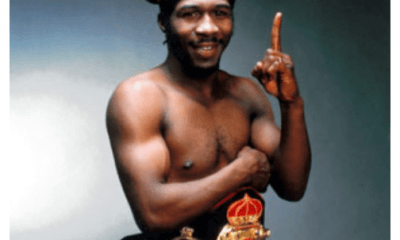
 Featured Articles4 weeks ago
Featured Articles4 weeks agoBoxing Odds and Ends: The Wacky and Sad World of Livingstone Bramble and More
-
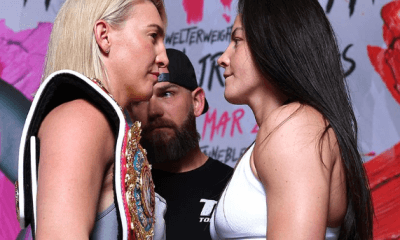
 Featured Articles4 weeks ago
Featured Articles4 weeks agoAvila Perspective, Chap. 319: Rematches in Las Vegas, Cancun and More
-

 Featured Articles3 weeks ago
Featured Articles3 weeks agoRingside at the Fontainebleau where Mikaela Mayer Won her Rematch with Sandy Ryan
-
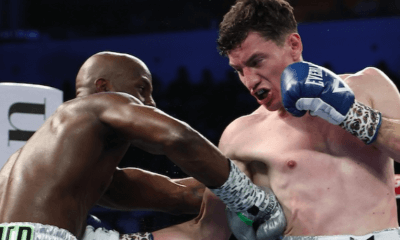
 Featured Articles3 weeks ago
Featured Articles3 weeks agoWilliam Zepeda Edges Past Tevin Farmer in Cancun; Improves to 34-0
-
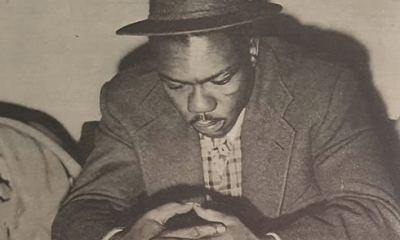
 Featured Articles3 weeks ago
Featured Articles3 weeks agoHistory has Shortchanged Freddie Dawson, One of the Best Boxers of his Era
-
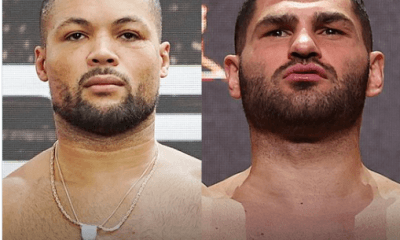
 Featured Articles3 weeks ago
Featured Articles3 weeks agoAvila Perspective, Chap. 320: Women’s Boxing Hall of Fame, Heavyweights and More
-
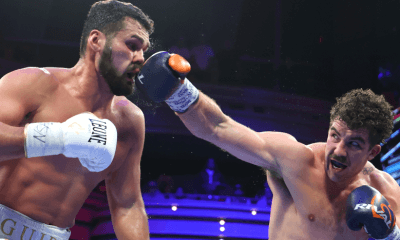
 Featured Articles2 weeks ago
Featured Articles2 weeks agoResults and Recaps from Las Vegas where Richard Torrez Jr Mauled Guido Vianello














